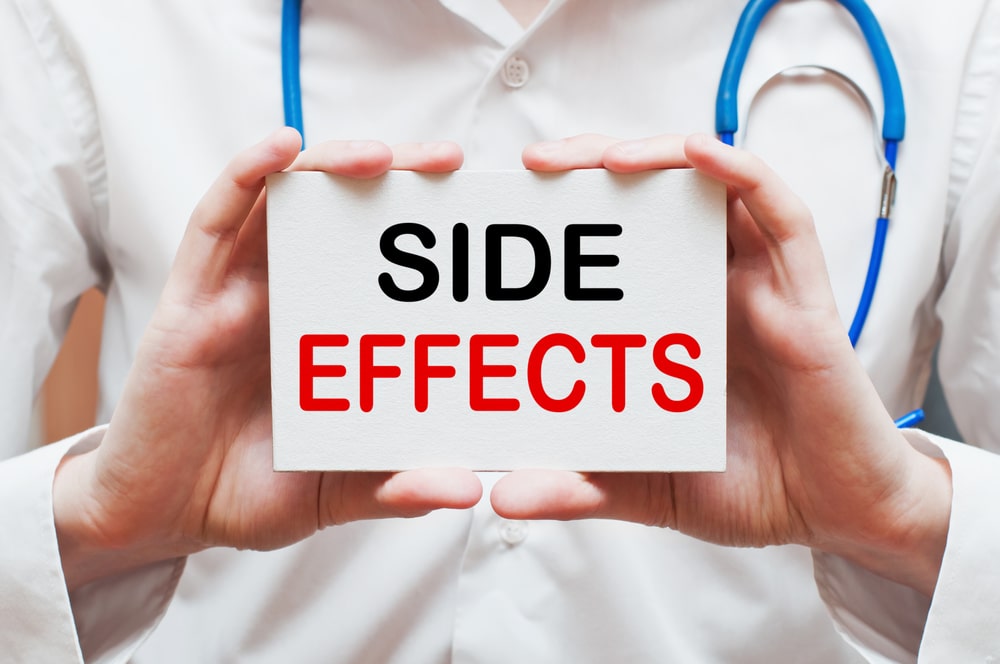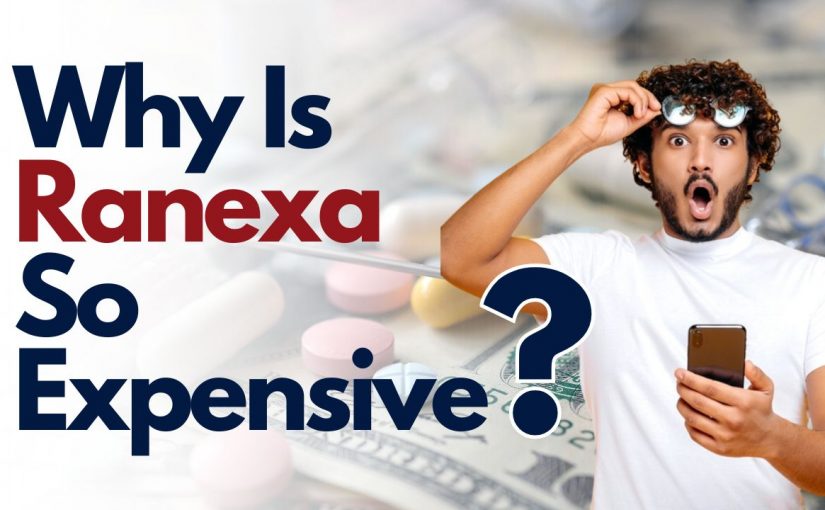Why Is Ranexa So Expensive?
Ranexa ER (Ranolazine extended-release) is a prescription medication that has gained attention in the medical community for its role in managing chronic angina, a condition characterized by chest pain or discomfort due to reduced blood flow to the heart. In this blog, we will explore what Ranexa ER is used for, how it works, its benefits, potential side effects, and important considerations for why is Ranexa so expensive medication.
What Is Ranexa?
Ranexa ER is the brand name for Ranolazine, a medication primarily used to treat chronic angina. Unlike other anti-angina drugs that work by reducing heart rate or dilating blood vessels, Ranexa ER operates through a different mechanism. It works at the cellular level, affecting the sodium channels in the heart muscle, reducing the tension in the heart walls, and improving blood flow.
What Is Ranexa Used For?

By modulating this specific sodium channel activity, Ranexa ER helps to improve the heart’s ability to relax between beats, reducing the frequency and severity of angina attacks without significantly affecting heart rate or blood pressure.
Uses of Ranexa:
Chronic Angina:
The primary use of Ranexa ER is for the treatment of chronic angina. It is typically prescribed for patients who experience frequent angina attacks that are not adequately controlled by other medications.
Off-Label Uses:
While Ranexa ER is officially approved for the treatment of chronic angina, it has also been studied for other cardiovascular conditions. Some research suggests potential benefits in patients with diastolic heart failure or arrhythmias, though these uses are not yet officially approved by regulatory bodies like the FDA. Always consult a healthcare provider before using Ranexa ER for any off-label purposes.
Ranexa Side Effects:

Common Side Effects of Ranexa:
- Dizziness
- Headache
- Constipation
- Nausea
Serious Side Effects of Ranexa:
While most people tolerate Ranexa well, there are potentially serious side effects that require immediate medical attention:
- QT Prolongation
- Severe Allergic Reactions
- Kidney Problems
- Liver Problems
How much does Ranexa cost with and without insurance?

The Ranexa cost (Ranolazine) can vary significantly depending on factors such as your location, pharmacy, dosage, and whether you have insurance. Below is an overview of what you might expect to pay both with and without insurance.
Cost of Ranexa without Insurance:
Without insurance, Ranexa can be quite expensive, as it is a brand-name medication. The price can vary depending on the pharmacy, but here are some general estimates for a 30-day supply:
- Ranexa 500 mg (30 tablets): The average cost is around $300 to $400.
- Ranexa 1000 mg (60 tablets): The average cost is around $600 to $800.
Cost of Ranexa with Insurance:
With insurance, the cost of Ranexa can be significantly reduced, depending on your specific insurance plan.
- Typical co-pay for brand-name drugs: For those with insurance, the copay for Ranexa might range from $30 to $100 per month, depending on the plan and the specific terms of your coverage.
- Tiered pricing: Ranexa is often classified as a higher-tier drug, which means it may have a higher co-pay than generic drugs.
Why is Ranexa so expensive?
Below are the key reasons why is Ranexa so expensive:
Research and Development (R&D) Costs: The process of creating a novel medication is time-consuming, costly, and complex. Before a drug can be introduced to the market, years of research, clinical trials, and regulatory approval are required. Pharmaceutical companies recoup these costs by pricing the drug higher once it is approved for sale. Hence the answer to the question: why Ranexa is so expensive?
2. Market Exclusivity and Patents:
When a new drug like Ranexa is developed, it is typically protected by patents, granting the manufacturer exclusive rights to produce and sell the drug for a certain period (usually 20 years from the date of filing).
3. Limited Competition:
Even after patents expire, the cost of Ranexa may remain high due to limited competition in the market.
4. Brand-Name Premium:
The brand-name version of a drug often commands a premium price compared to generic versions, even after generics become available. Some patients and healthcare providers may prefer the brand-name drug due to perceived differences in effectiveness, tolerability, or quality control, which allows the manufacturer to maintain a higher price. And making the most frowned upon query: why is Ranexa so expensive.
5. Pharmaceutical Pricing Strategies:
Pharmaceutical companies set drug prices based on various factors, including the cost of production, the value the drug provides to patients, and market dynamics.
6. Healthcare System and Reimbursement
The pricing of medications like Ranexa is also influenced by the broader healthcare system, including how drugs are reimbursed by insurance companies and government programs.
7. Post-Market Surveillance and Ongoing Costs
After a drug is approved and brought to market, the manufacturer continues to incur costs related to post-market surveillance, marketing, and further research. These ongoing expenses can also contribute to the high price of the drug.
Is there a generic for Ranexa or a cheaper alternative?
1. Generic Version of Ranexa:
- The generic version of Ranexa became available in 2019 after the patent exclusivity for the brand name Ranexa expired. The generic Ranexa is significantly cheaper than the brand-name Ranexa. While prices can vary, generic Ranolazine can cost anywhere from $20 to $120 for a 30-day supply, depending on the dosage and the pharmacy.
2. Cheaper Alternatives:
Besides Ranolazine, there are other medications used to treat chronic angina that may be more affordable, especially in their generic forms.
Some of these include:
- Beta-blockers
- Calcium channel blockers
- Nitrates
- ACE inhibitors/ARBs
Ranexa’s high cost is the result of multiple factors, including the substantial investment in R&D, market exclusivity through patents, limited competition, and strategic pricing by the manufacturer. That is why Ranexa is so expensive.
FAQs:
Can Ranexa and Isosorbide be taken together?
Yes, Ranexa (Ranolazine) and isosorbide can be taken together under the supervision of a healthcare provider. These two medications work through different mechanisms to help manage chronic angina. Ranexa improves blood flow to the heart by reducing tension in the heart muscle, while isosorbide, a nitrate, relaxes blood vessels to increase blood flow and reduce the heart’s workload.
How long does it take for Ranexa to work?
Ranexa (Ranolazine) typically begins to show effects within one to two weeks of starting treatment. However, it may take up to four to six weeks for patients to experience the full benefits, as the medication works gradually to reduce the frequency and severity of angina attacks.
How long does Ranexa stay in your system?
Ranexa (Ranolazine) has a relatively long half-life, meaning it remains in the body for an extended period (as the name suggests ER). The drug’s half-life is approximately 7 to 9 hours.
Can Ranexa cause low blood pressure?
Ranexa does not significantly affect blood pressure or heart rate directly. Instead, it works by modulating sodium channels in the heart to improve blood flow and reduce angina symptoms.
What is the difference between Ranexa and Ranolazine?
Ranexa and Ranolazine are essentially the same medication; “Ranexa” is the brand name, while “Ranolazine” is the generic name.
What drugs should not be taken with Ranexa?
Ranexa (Ranolazine) drugs that should be avoided or used with caution in combination with Ranexa include strong CYP3A4 inhibitors like ketoconazole and clarithromycin, as these can increase Ranolazine levels and elevate the risk of side effects.

